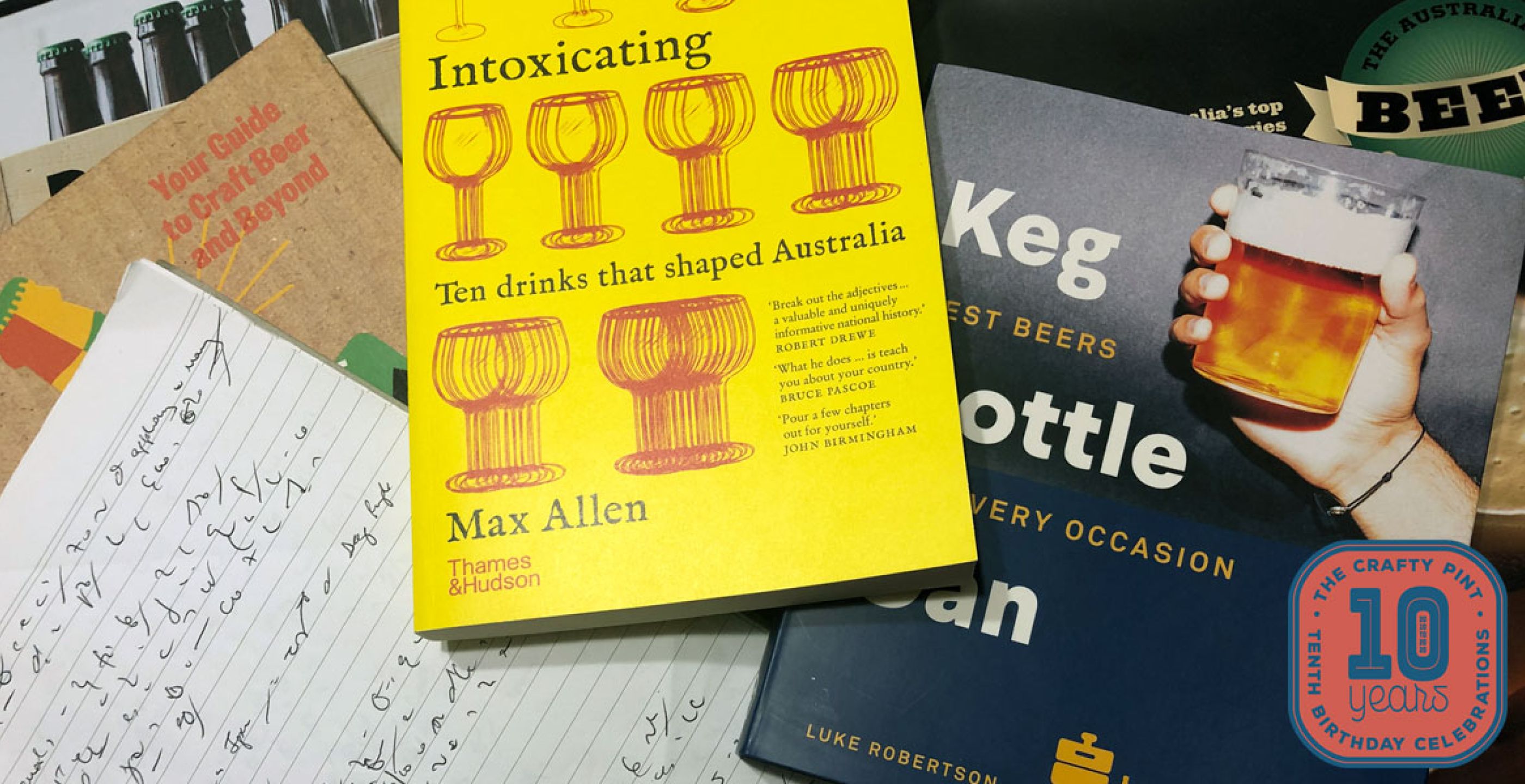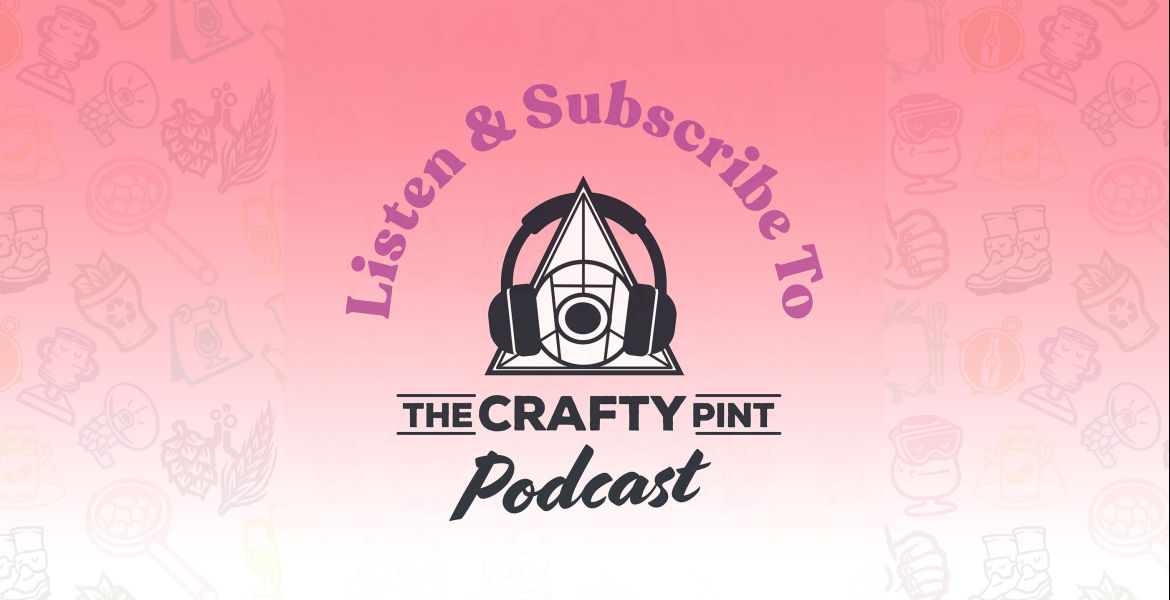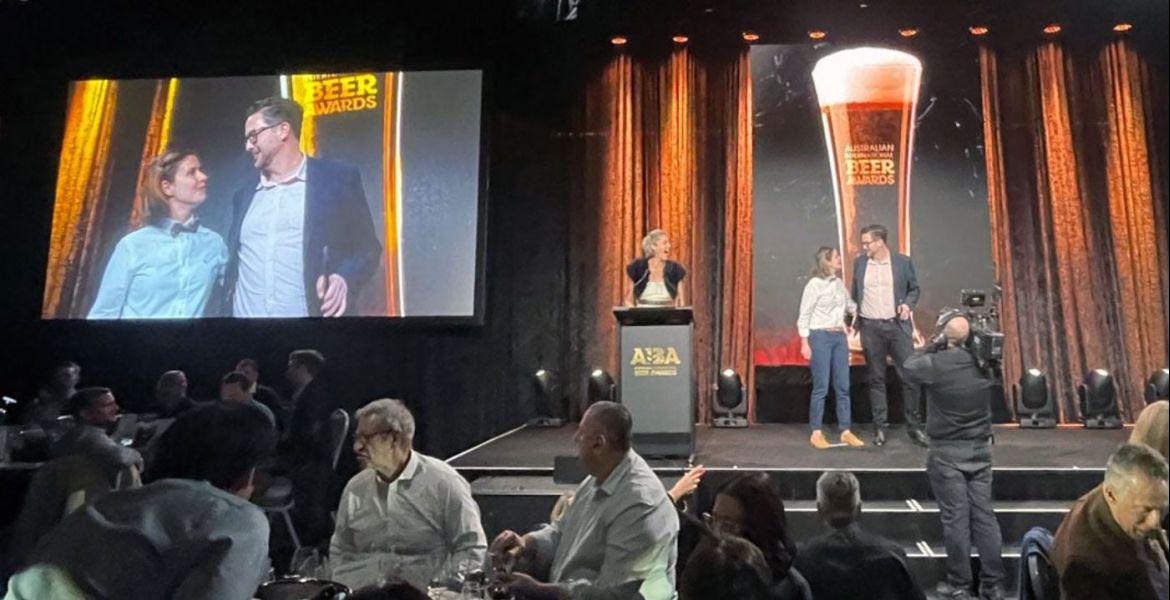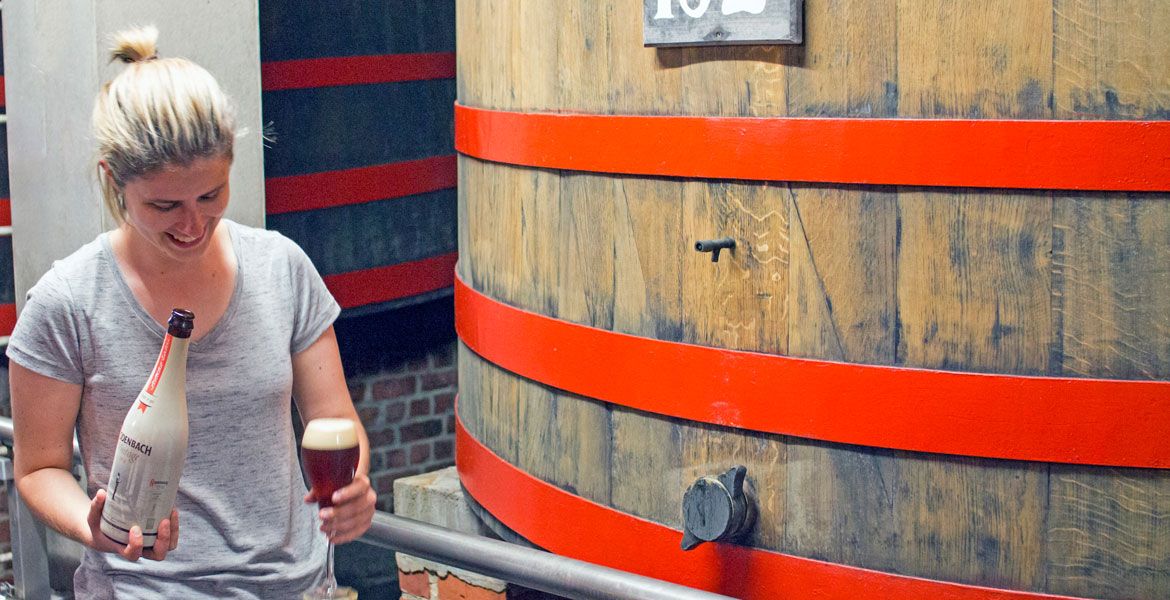In part six (or seven, depending how you're counting) of our look back at the decade in beer since The Crafty Pint launched, we turn our focus onto the medium in which we operate: media. How has the way people write, talk and discuss beer changed? And how has the way in which we consume information about the beer world changed?
“Like, about drinking beer?”
“You write about what?”
“Have you heard about this new one from Geelong? Furphy, I think it’s called?”
I’m fortunate in that beer writing is a full-time job – it’s an excellent one at that, yet one few people are willing to believe is real. Whether it’s at a house party (remember those?), Golden Plains (remember the good times?) or at the dentist (maybe proof that Melbourne’s ongoing Stage 4 restrictions do have their benefits?), it’s a job title that’s rarely met with acceptance, more often with disbelief.
That’s despite the reality that, as with bottleshop fridges, craft beer now takes up more space in the mainstream media than it ever has, whether it’s the column inches that surrounded Wildflower or Moon Dog World's openings, or travel guides almost guaranteed to feature the regional breweries you should visit alongside the local wineries.
Beer has its own dedicated print publications too. Beer & Brewer launched in 2007 and the free monthly Froth was launched by Emily Day in 2015. When it comes to the online world, The Crafty Pint turned ten this month, a fair few months after Brews News notched its decade, after going live on Australia Day 2010.
Long before anyone paid for a URL for a beer website, however, Willie Simpson was writing about beer. From 1994 on, his words primarily appeared in the Sydney Morning Herald and elsewhere under the Fairfax banner, evolving into a weekly beer column from 1999. Between 2001 and 2009, Willie also wrote three books on beer, Amber and Black, The Beer Bible and The Australian Beer Companion.
In 2008, Willie and partner Catherine Stark launched Seven Sheds – a brewery, hop garden and meadery – in Railton in Tasmania’s north before later, in 2012, he stopped writing to focus solely on the brewery. It means that, as Willie’s the first to point out, he exited the world of beer writing at the time a growing number of people were starting to pay attention.

“The momentum really came in the last ten years and I stopped writing in 2012, so really I got out before all the madness and the acceleration,” he says.
Even then, well before the days of haze and hype, much of his focus was on the sort of topics we’d recognise today: new beer releases; new breweries opening; and what the big breweries were doing to keep up. At times, he’d look to write about other forms of alcohol too.
“It was never exclusively beer; it was beer, spirits and all other drinks except wine,” Willie says.
“There wasn’t much happening but there was enough happening to make it newsworthy. Any new brewery or almost any new beer would be a column, so it’s not like now where you’re barely able to keep up with it.”
When he first started writing about beer for the paper, he felt like he was a bit of a novelty act – there was a clear difference between the way the beer world was regarded compared to wine.
“I recall one of my editors instructing me to keep my beer writing ‘fun’, as if beer couldn’t be treated as seriously as wine [for example],” he says.
“I suppose I managed to break down that perception over time, though I tried hard not to sound like the equivalent of a ‘wine wanker’.”
Aside from the number of breweries, another stark contrast could be found in the relationship with readers. Today, comment sections on social media can run wild, particularly if a brewery does something wrong or brews a beer with Kellogg’s, for example, but, historically, feedback mainly came from editors.
“You were virtually unaware of the readers,” Willie says. “It’s not like now where you get comments. Occasionally I’d get forwarded a letter that someone had actually written or emailed.”
It was an email, albeit not from a reader, that led to the decision to put down the pen and focus on the brew paddle.
“I covered every Cascade First Harvest from the late 1990s until 2012,” he says. “I’d covered it from every angle and when the invite came to write about it for 2012 I just went, ‘Well that’s the end.’”
By that stage, he was instead part of a story that was starting to write new chapters faster than at any time in modern Australian history. Sure, he hadn't exactly been short of tales to tell over the previous three decades, but the beer industry and the wider community of which it was part was morphing into something new, as was the nature of beer media.
Joe Blogs

Ten years on from their launch, The Crafty Pint and Brews News are well established as the main sources of beer news and information online in Australia. Yet, when they started out, it was into an online beer world that was already relatively busy.
Ale of a Time also launched in 2010, for example, becoming part of a landscape including other beer-related blogs, such as Beer Bar Band, The Wobbly Thong, Beer Blokes, Back Of The Ferry, Eat, Drink, Stagger and From Beer To Eternity, each bringing their own approach and, often, opinions on all things beer.
There were many more, often appearing and entertaining for a year or two before the people behind them realised it was bloody hard work coming up with new ideas – not to mention writing for nothing (except maybe some free beers) and to a small audience. But some bucked the trend and enjoy – or at least enjoyed – longevity.
Pia Poynton started Girl + Beer in 2012 after leaving Perth and moving south. She had left her job running the (now closed) Five Bar, one of the first venues in the city to support local beer, and found herself missing some of the lifestyle.
“I was missing that connection and having that conversation with someone over the bar,” she says. “I was missing that because I never stopped loving it, I just stopped loving the hours.”
Living on the doorstep of Margaret River meant she was surrounded by breweries but found information on them hard to come by.
“Even at that time there were so many breweries down there but you couldn’t really find that much information about what was new and what people were doing,” she recalls.
“So it was this idea of shedding a light on all the breweries of the south west and what they were doing and scratching that itch of engaging people about new beers.”
That said, in the early days she wasn't sure if anyone was engaging.
“In the beginning I just felt like I was writing into the abyss," she recalls. "It was very much for me.”
But people were reading, as she discovered when approached at beer festivals by those who'd read her articles. Before long, she was contributing to these pages, as well as those of Brews News and, later, Froth, a sign that not only was there something to write about but there were places serious about covering it and eager to work with those doing it well.

Brews News founder and editor Matt Kirkegaard (above right with Radio Brews News co-host Pete Mitcham), who had already been covering the beer industry and hosting beer events before launching the site, believes that period in which blogging was flowering was, in many ways, when beer writing was at its best.
“By and large blog writers knew their patch really well," he says, "and because bloggers were invested in what they were doing they went to considerable effort.
“Blogs had all of the benefits of social media, but with longer form communication. Bloggers tended not to just dismiss a beer with ‘meh’ or ‘disappointed’ or just share a photo of their latest iceman pour.”
One of the most prominent has been Ale of a Time, launched by Luke Robertson in 2010 at the start of a career in beer (and food and other drinks) that's seen him co-host the podcast of the same name with Dave Ellis since 2013, write for various beer publications here and in the US, and author the book Keg Bottle Can: Best Beers For Every Occasion.
“Opportunities have grown within the beer world for places to write,” he says, “but probably not as much as I’d anticipated, maybe just because Australia is such a small market.”
For those aspiring to following a similar path, he believes blogging and social media offer a chance to build experience.
“You can prove yourself and learn how to do it yourself,” Luke says. “All of that stuff, whether it’s on Instagram, a blog or whatever is building skills. All my photography skills are self-taught and from wanting to take photos that were on the level of Good Beer Hunting – knowing that if I wanted to write for them, my photography would need to be on that level.”

Over the latter part of the decade, however, beer blogs began to fade. In many cases, it came down to the time-consuming nature of maintaining one; for Pia, the fadeout could be traced back to when she started working in the industry full-time again. Add in the growing ubiquity of social media and the rise of beer podcasts – of which Radio Brews News was the first in the country – and there were less time-consuming ways of putting opinions, photos or experiences into the public sphere, as well as more ways for beer drinkers to consume information.
“Blogging died out because bloggers were usually unpaid enthusiasts and the time to create good articles was immense but largely unrewarded," Matt says, "and so enthusiasm starts to wane after a time. Social media came to overwhelm the blog medium as well.
“Podcasts have become the new blog and we're seeing the same sort of explosion which is great, but I suspect the same cycle will occur and we'll see many good ones peter out.”
If they do, one of the factors – as with blogs – will likely be the time required to produce one to a decent standard. And, aside from those beerstagrammers that spend hours lovingly setting up photos, collages or animations, or the people that have set up and moderate Facebook beer groups, time isn't a factor that's going to work against the one element Matt suggests has probably had the most profound impact on beer over the last decade: social media.
“While it has democratised beer communication in many ways and allowed breweries and consumers to be more engaged in the sharing of beer information directly," he says, "I think it has put more emphasis on hype around beer and not necessarily increased understanding."
The impact of Instagram and Facebook beer groups in particular is an entire topic for another time, but the ability of anyone with internet access, a phone and a desire to share an opinion in the public sphere has undoubtedly played a role in taking beer to where it is now.
Sure, the vast majority of craft beer being consumed in Australia is still made up of pale ales, XPAs, summer ales, lagers and IPAs bought in multiples rather than as singles, but who's going to amass likes and comments with a photo of that? At the same time, is the volume – in both senses – of drinkers chasing pastry stouts, imperial cream sours and 40 grams per litre triple IPAs great enough to warrant brewers tearing up business plans and chasing trends in the hope they blow up on socials?
Whatever the answer, social media platforms succeed in reaching and engaging an audience that no longer engages, or never has, with more traditional forms of media. And it's at a time when, for more Aussies than ever before, you don't have to try that hard to find a wide range of beer either; indeed, people reaching drinking age might find it hard to believe craft beer was still considered a fad just a few years ago.
Old School

Turning the page to coverage in the mainstream media and beer is accorded more column inches and minutes on air than a decade ago, although that doesn’t mean it’s necessarily treated more seriously than in Willie's day.
“Unfortunately, while wine is generally covered by someone with some expertise, there are very few recognised mainstream beer writers, possibly even fewer than there used to be,” Matt says.
The flow on effect of this paucity of writers in the mainstream media with a depth of knowledge is that it can still be treated as a bit of a sideshow.
“The mainstream media tends to focus more on the gimmick or the fashion element and doesn't take the product seriously, and this has an impact on how beer is perceived.”
There are exceptions, however. Among them Max Allen. He's been writing about wine since 1993, with a regular column since 1997 (something he's quick to call a luxury), which today is found in the Australian Financial Review. In his just-released book, Intoxicating: Ten Drinks That Shaped Australia, Max explores the history of VB and the role of lager within Australian culture but, over the years, he’s regularly written about the nimbler end of the beer world too.
Towards the start of the millennium he covered the likes of Mountain Goat, Little Creatures and Holgate, and how the big brewers would have to adapt to what the new upstarts were bringing to the table. More recently, he's "consciously looked for beer stories that have a crossover with wine", for example shining a light on the likes of Wildflower or Van Dieman, for whom terroir is central to their philosophy.
The number of articles he’s written about local beer – as well as spirits – has been increasing, something he says reflects both the boom in local beer and his own trajectory as a writer towards a poly-booze approach that's being taken by others like James Atkinson with his Drinks Adventures podcast.
“I found it as interesting to write about the history of beer as I did about the history of wine," Max says. "For me personally, it’s all part of a career plan – which makes it sounds more organised than it is – to not just write about wine forever.”
The lack of beer experts with name recognition compared to the world of wine might also come down to the nature of beer and the way in which it is covered.
While there are writers the world over giving wine and spirits scores out of 100 or using a star rating system, no writer is doing the same for beer. At The Crafty Pint, for example, our approach has always been to tell the story behind the beer and describe its character, hopefully giving readers enough information to decide if it’s worth their while investigating while respecting each individual's different tastes.
You can point to Untappd and RateBeer, sites that based around rating beers, but their scores are crowdsourced and in the case of Untappd in particular, gamified.
The closest beer writers typically get to rating beers is when they join brewers and other beer industry experts on the blind tasting panels of beer competitions. It's something Willie Simpson has done plenty of times, experiences that led him to believe beer isn't a science. During his time as a writer, he avoided attributing scores because he argued there would be batch to batch variation.
“Also, age and oxidisation affects beer more than wine, so unless beer was absolutely fresh the score might be skewed,” he says.
“Moreover, I agree with George Bernard Shaw, I think it was, who said something along the lines that competitions should be for athletes and horses, not artists or writers – or beers, for that matter.
“This, after he’d been awarded the Nobel Prize for Literature.”
The Future

While the past decade has, in many ways, been a glorious one for beer and those passionate about it, it's been a pretty rotten one for the world of media. Famous print mastheads have been dying the world over for years and COVID-19 has only accelerated the demise of other titles, both physical and online.
Even in 2012, as he decided to move on, Willie says the media industry itself wasn’t looking too healthy.
“The budgets were getting smaller, the battle was on and the print advertising was disappearing,” he says.
That decline in revenue has only continued, and as someone who cut his journalistic teeth writing for community newspapers, Willie says it’s particularly concerning to see papers with well over a century of history shut up shop in what’s an increasingly tough landscape for independent media.
“It’s a worry and it’s been accelerated by COVID. The only way it’s going to survive is if people subscribe to it, because online advertising obviously doesn’t pay enough. Or governments subsidise independent media as they do in places like France and other places in Europe.”
It's a situation that's led Matt to have concerns for the future of beer journalism, pointing to specialist beer publications overseas that are struggling or have ceased to exist.
“Media hasn't found a new business model that promotes quality journalism and the financial shift [by businesses] has been towards investing in PR rather than paying for advertising that makes journalism possible,” he says.
“Good beer writing is time-consuming and expensive to create, and not always in the interests of advertisers, but current media business models necessarily focus on the advertiser, not the reader.
“I don't think it serves the industry well for beer writing to see its role as boosting the industry. Good beer writing should question, analyse and explain not promote. That's called PR.”
Add in the rise of social media and you have a very different picture to 2010. And it's in acknowledging the broad and evolving nature of the media landscape that the clearest understanding of where we are can perhaps be found. It's one in which different audiences seek (and create) information in different forms and in which different forms of media, in turn, operate with different goals.
Is writing about a new release beer journalism in the same way that an in-depth feature on beer quality, mental health or sexism is? Not at all, but it's part of a broader ecosystem in the same way that newspapers have long been divided into news, opinion, arts or sports sections.
Is a stream of slightly different photos of the same hyped oat cream IPA in the same realm of media as a podcast interview with a brewer? No, but both engage different audiences and foster an interest in beer.
And maybe that's the major way in which beer media has evolved over the past decade, to become something more multifaceted, more nuanced, more disparate and more open than before. While social media provides a platform upon which any beer lover can amass an impressive following, it's also another tool with which the beer world – brewers, venue owners, hop growers, or more traditional beer media organisations – can engage and expand their audience.
We can't present an analysis of the changing face of beer in Australia over the past decade via Instagram, Facebook or Twitter, for example, but we can use those platforms to let people know we're doing it. Similarly, a brewer can't give you the full experience of what they offer via social media, but they can entice you to buy their beers or book in a visit.
Yet, while the challenges for the world of media (beer or otherwise) become greater and the medium itself continues to evolve, the purpose remains the same: to provide information, education or entertainment to an audience. At The Crafty Pint, our journalistic goal remains the same as it was ten years ago, we've just had to try to get our head around how best to use Instagram or host online events via a multitude of streaming tools.
And whatever people from one generation of media consumers or practitioners might think of another, they're all potential beer drinkers, readers, listeners and viewers.
“To grow the category," Luke says of people engaging with craft beer for the first time, "we need to be picking up those people regularly.”
As with the wider beer and hospitality industries, the impact of COVID-19 makes forecasting the future of the beer media harder than ever. But, at a time in which there's never been as much to cover, analyse and interpret, I'm living proof it really does exist.
If you'd like to "subscribe" to The Crafty Pint and help us survive these challenging times, you can by signing up to our beer club, The Crafty Cabal. You won't just be helping us but you'll be better off too thanks to all the deals, giveaways and events.
Ten Years Of Crafty continues tomorrow with a look at changing tastes in beer over the past decade. And you can find the remainder of the series here. If you'd like to share your favourite photos and memories from the past decade on socials, please do so with the hashtag #tenyearsofcrafty so we can check them out and maybe feature them in another article later in the series.

















